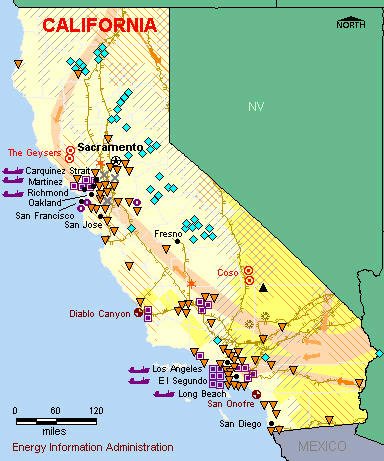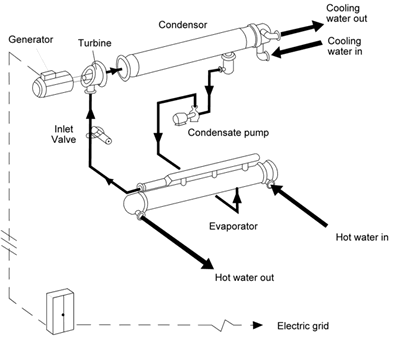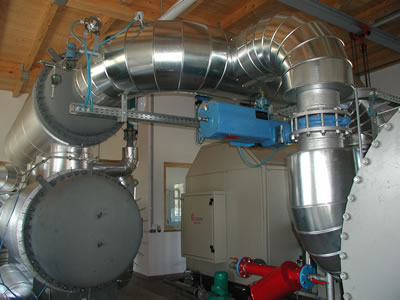Archive for December, 2006
Looking to sell renewably generated electricity?
Then we at Montara Energy Ventures want to speak with you. If you meet the following requirements, and want to sell your electricity, contact us:
- Electricity generated by some verifiably renewable means
- Ability to sell more than 80,000 MWh/year
- Desire to enter into a long term business relationship (>5 years)
- Location on or near US West Coast
- Preferred, power available within the next 12 months
If you know of a company that might meet these requirements, feel free to direct them this way for a conversation.
Technorati Tags: Renewable | Electricity | Purchase
1,500 MW Wind Power Purchase
This week, Southern California Edison signed an agreement with Alta Windpower Development, LLC. (subsidiary of Australia’s Allco Finance Group) to purchase the output of an aggregation of projects to produce some 1,500MW of electricity from turbines located in Tehacapi. That’s renewable at utility scale and it’s very exciting to see. I strongly suspect that a large portion of that 1,500MW is power that will be displaced when sites in Tehacapi are “repowered” – taking older, smaller turbines down and replacing them with larger, more efficient models. Regardless, it’s encouraging to see renewable projects on this scale.
To put 1,500MW into perspective, the average wind turbine has a capacity factor of 30% meaning the net average generation capacity at any point in time would be around 450MW flowing onto the grid. As a reminder, a MW of capacity is capable of generating a MW per time period, say an hour, to get megawatt hours (MWh.) A MW at 100% capacity and availability would be able to generate 8,760 MWh (non-leap year) or 8,760,000 kilowatt hours. This project will generate approximately 3.9 gigawatt hours per year (3,900,000,000 KWh.) Check your electric bill, it’s metered and billed in KWh, most households in the US consuming around 1,000 KWh per month. The net is, that’s alot of power coming from a renewable resource. Very encouraging.
Technorati Tags: Energy | Investment | Power Purchase
Cool new DoE resource
The Energy Information Administration (part of DoE) has launched a new website that provides a comprehensive overview of energy consumption, production, and distribution across the US, with deep dives into each state. It’s pretty cool (though there is room for improvement as the Imperial Valley in California is missing as a geothermal producer for example.) It seems to use much of the same data from the Electric Power Monthly report and much more aggregating it into a more consumable format. It’s certainly a great start.
When clicking around a bit, one of the things that struck me was that California, with 12% of the US population is responsible for only 2.2% of carbon dioxide and nitrogen dioxide emissions and 0.2% of sulphur dioxide emissions in the US. While the share was wildly disproporitionate, the absolute tonnage of emission is still enormous. The image below shows a summary of California, click the picture to get the detail that goes along with the image.

Technorati Tags: Energy | Reports | DOE
More Geysers development
Back in October, Western GeoPower (TSX: WGP) announced their intent to rebuild a power plant on the site of old “PG&E Unit 15” commencing operations in 2009. This is interesting in that there was a plant on that site producing 65MW from 1979-89. By resizing the plant to 25MW (net,) Western GeoPower believes that they’ll get 50 years of operation from the site producing some 200,000 MWh per year.
Technorati Tags: Energy | Geothermal | Electricity
Organic Rankine Cycle
The Organic Rankine Cycle (ORC) is a fancy name for a binary system taking heat from a source and transferring it to a working liquid in a closed system to be vaporized and pressurized, typically turn a turbine, then condense back to liquid form before flowing through the heat exchanger again to repeat the cycle. The diagram below breaks out the typical components of an ORC system.

These systems can vary in size from a few hundred kilowatts clear up to hundreds of megawatts. A picture of a 200Kw system is displayed below.

These ORC systems have several key benefits over traditional steam turbines including lower operating temperature (down to 75C,) less wear and tear on turbines (clean single fluid environment,) and no requirement to expose heat source to the environment (no emission power generation is possible using these units in a closed geothermal system for instance.) The major disadvantage to this approach is that energy is lost during the heat transfer process relative to direct use systems.
Technorati Tags: Energy | Science | Geothermal








